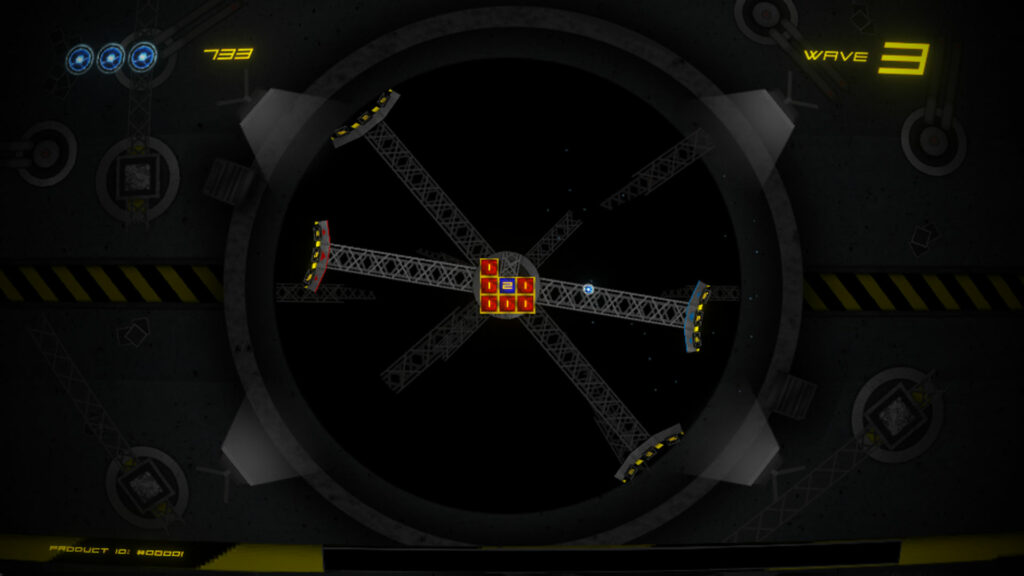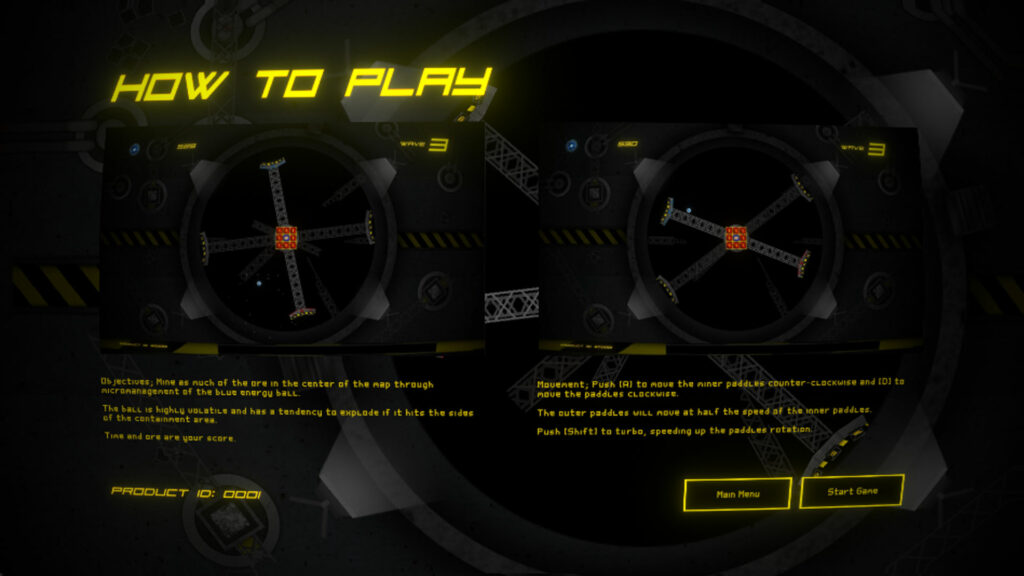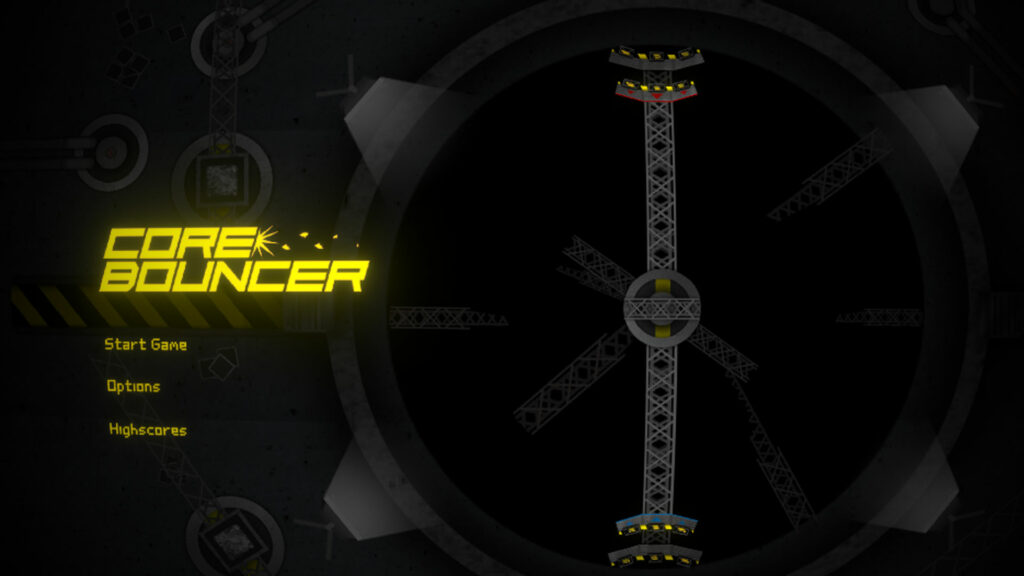Developer: James Wilburn | VECTOR_interactive
Released: 2021
Contact: vectorcreativeltd@gmail.com
Link: itch.io
Core Bouncer is a reimagining of the single player game: Pong. It was released as a free-to-play experience for casual audience that also served as a platform for feedback on experimental mechanics.
The majority of assets and modifications to the original designs were undertaken by the sole developer.
About
Core Bouncer’s primary objective was to take a ‘classic’ video game and experiment with the core mechanics, pushing them to an extent where by they formed a unique play experience; but remained opaque as to what video game mechanics had been used as inspiration.
Gameplay Inspiration: Pong.
The Foundation:
When we consider classic video games, very few could argue that Pong is not one of the most classic ones out there. The game consists of three different components:
- The horizontal sides of the screen are occupied by paddles.
- The paddles bounce a ball between them.
- The player that hits the ball past the other paddle scores a point.
The Twist:
When thinking about how to modify the mechanics, the designer asked a couple of questions.
- What would Pong be like, if it were a single player experience?
- How could multiple paddles be controlled, if this were the case?
- Is there something more that we could add to Pong, in order to change the two objective limitation on play (hit the ball/keep the ball in grounds).
A 360 degree play-area, containing multiple paddles that skirted the outside was devised. The player would have to keep the ball within the playspace, or lose a life.
The objectives were expanded upon, by considering the process of ‘breaking bricks’ that could be found in the game ‘Breakout’, another classic. Adding in the objective of ‘breaking brick’s, the player now had a primary objective, with ‘keeping the ball inbounds’ falling to a secondary position. This also provided an opportunity for progression, creating opportunities for levels, increases in difficulty and scoring.
Features
Multi Paddle Control:
The Player rotates two pairs of paddles, that travel in different directions depending on whether they are the inner (pink travel path) or the outer pair (blue travel path).

The rotational speed can be increased for a limited period of time by pushing the shift key.
There is a skill element to this. The player will not only be lining up a single paddle with the ball trajectory, but will also have to remember which ways the paddles travel.
Finally, the paddles are curved on the ends, as to offer the player more options for manipulating the trajectory of the ball.

Breakaway ‘Block Formations’
On top of bouncing the ball off the paddle, the player is also asked to bounce the ball into a formation of bricks; located in the center of the play area.

The blocks themselves are square and so the trajectory changes should be fairly predictable, however testing showed that there was just enough variation, particularly around the corners, so keep it interesting.
The blocks were also designed to be denser toward the middle; this fit the ‘mining’ aesthetic that chipping away at the outside of a group of blocks evokes. They were made denser by requiring more hits with the ball, to destroy.
Level Progression
The introduction of the ‘Breakaway Bricks’ added a challenge component in the aspect of ball trajectory. It also added a ‘count down’ in that progression was required in the event that all the bricks were broken.
When implementing a progression system, there are three modifiers in play:
Ball Speed
As the player completes levels, the ball will slowly increase it’s capped speed. There is a point where this speed becomes completely capped out and the gameplay turns into a game of endurance.
Brick Density
The Brick grouping in the middle increases in area size, as well as individually required hit count.
There is a point where the area size becomes completely capped out and the gameplay turns into a game of endurance.
Paddle Handicap
The paddles receive a minor speed handicap, as the levels progress. This slows the rotation around the outside of the play area.
There is a point where the speed becomes completely capped out and the gameplay turns into a game of endurance.
Other Features
A LeaderBoard has been included to encourage competitive play. The score acts as the metric for success and this increased over time and as a result of destroying the ‘Breakout bricks’ located in the middle of the area of play. The inclusion of Lives is designed to put pressure on the player, as well as nod in the direction of the classic ‘three lives’ trope. They promote maximization of time and provide an end to the experience.







